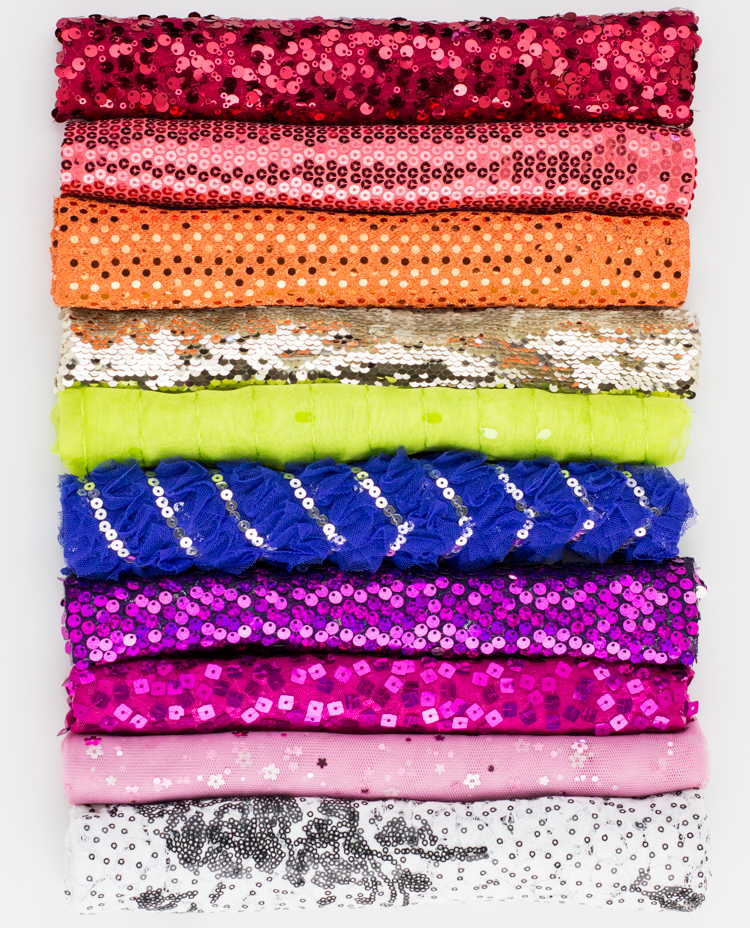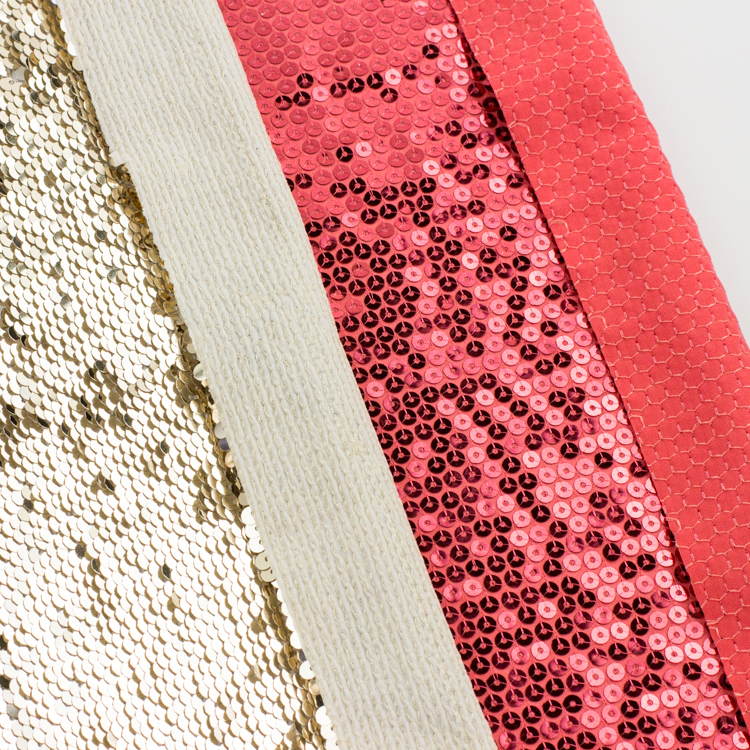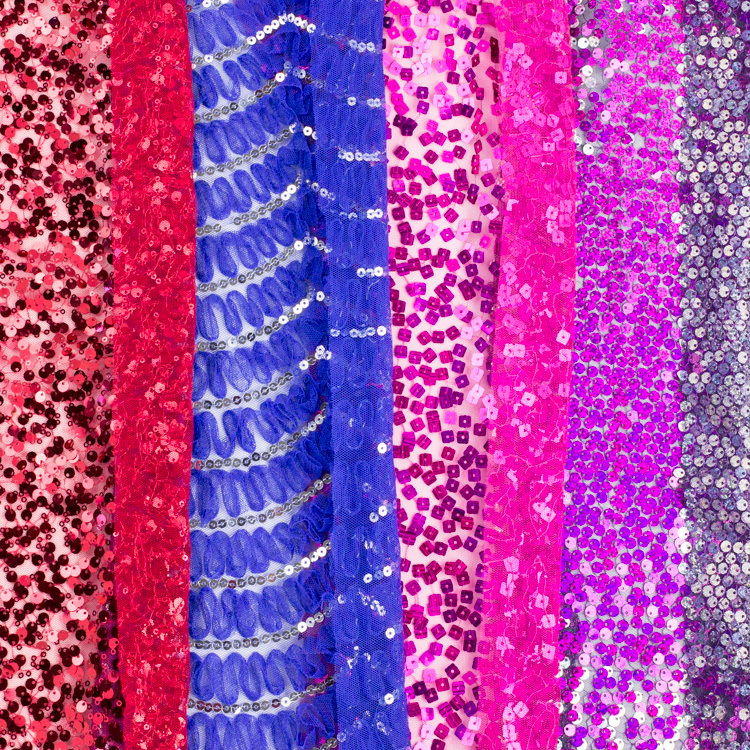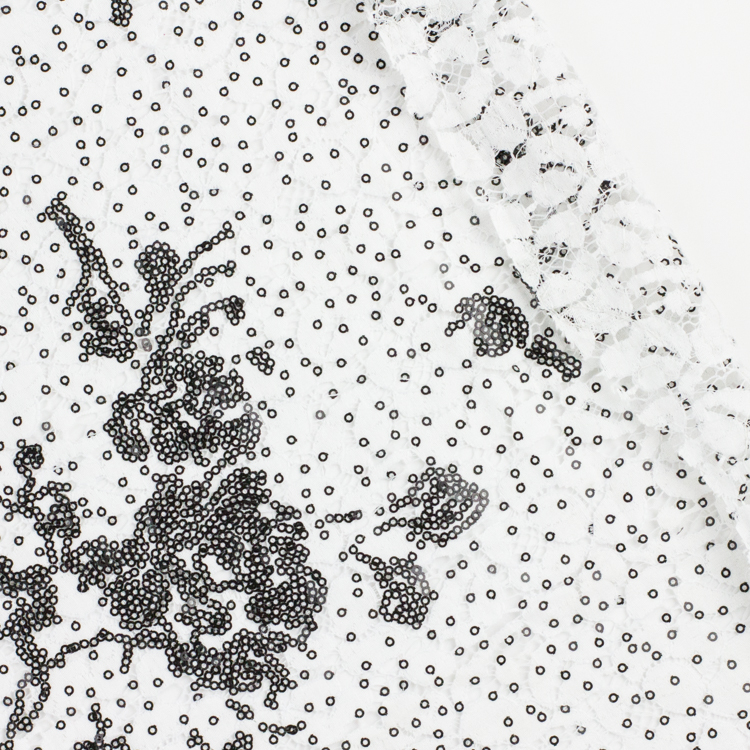The flashy top of sequin fabric steals the show because it is so dazzling to look at! 🌟 When it comes to sewing with sequin fabric it’s what’s underneath all that shine that really counts!
Today we are peeking at the wrong side of sequin fabric to get a better look at the backing fabric behind this fun fabric. Knowing and understanding the backing fabric will help you decide what sequin fabric to use for your next project.
The seemingly endless variety of sequin fabric can be grouped into categories by the type of backing fabric. I am sharing four types of sequin fabric and a little about each fabric’s characteristics. Once you go through this list you will be set to explore and identify the types of sequin fabric by the fabric backing.
Knowing the types of sequin fabric is the first step to a successful project because it will guide your decisions for which projects to add it to and the best techniques to use. Let’s get started!
1. Sequin Fabric with a Knit Fabric Backing
Here are two different examples of sequin fabric with a knit fabric backing. Like other knit fabrics, this sequin fabric also has stretch and the cut edges are no-fray. If you want to see an example of this type of fabric on a project, take a look at the doll dress here.
2. Sequin Fabric with a Netting Backing
Netting fabrics include mesh and tulle. I have four examples below to show the variety. It is a transparent fabric with typically no-fray edges and a slight stretch. Since it is see-through you will need to line the fabric for the project. Check out an example of this type of fabric on a doll dress here.
3. Sequin Fabric with a Woven Backing
Woven fabrics include organza, taffeta and rayon to name a few. This fabric has no stretch perpendicular or parallel to the selvage and the edges fray. It can be transparent like the example below or opaque. If you use this fabric take care with the hems and seams because the fray can be extreme.
4. Sequin fabric with a lace backing
Lace fabric is transparent so you will have to plan for a lining. Lace can vary whether it has stretch or no-stretch. Also check the cut edges, whether they fray or are no-fray.
Stitched vs Glued
In all of the previous examples the sequins were stitched to the backing (sometimes with invisible thread). You may come upon sequins that instead are glued to the backing. In the example below the sequins are glued to a knit and a netting backing fabric. This effects the sewing process. While you stitch, the friction from the needle passing through the fabric warms up the adhesive and gums up your needle. I know from personal experience this can be frustrating and you’ll need specific techniques to deal with this.
Now your assignment is to get a close up look at sequin fabric! You’ll be able to discover whether it has one of these four types of fabric backings, knit, netting, woven or lace. Remember to check to see if the sequins on the fabric are stitched or glued. Sequin fabric can seem too fancy to sew but once you see that it is made with backing fabrics that you already sew with, it opens up the possibility of adding sequin fabric to your next project!
-Anna
Getting Started with Sequin Fabric (Part 1)
Add sequin fabric on a dress (Option 1). Use a sequin fabric with a knit backing on a dress bodice. Includes a step-by-step tutorial.
Add sequin fabric on a dress (Option 2). Use a sequin fabric with a netting backing, including a lining fabric, on a dress bodice. This also includes a step-by-step tutorial.
Buy the Sequin Hair Bow pattern here.






